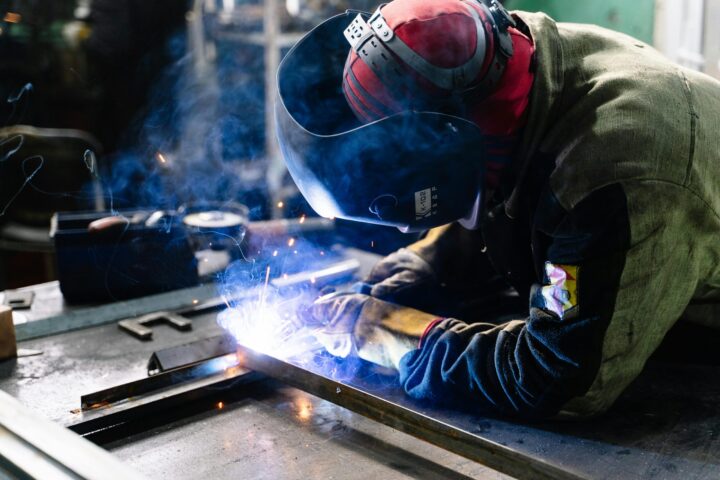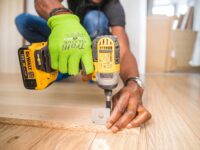The following contribution is from another author.
Welding might seem simple from the outside—put on a mask, fire up the machine, melt some metal together, and boom, you’ve got something strong. But once you’re actually the one doing the work, it doesn’t take long to figure out how important good tools really are. Crappy gear turns what should be a clean, smooth job into a total mess. And when stuff breaks halfway through a weld, it’s not just annoying—it can be dangerous or even ruin the whole project.
Whether it’s a quick fix or a full-blown build, welding gear needs to be reliable. Tools that keep working, wires that feed properly, gloves that don’t catch fire, and a welder that doesn’t freak out when you push it hard. That’s what makes a big difference.
Good Gear Isn’t Fancy—It’s Just Built Right
The thing about high-quality welding equipment is that it doesn’t have to be fancy or loaded with features you’ll never use. What matters is how it holds up when it’s used every day. A cheap MIG welder might work fine the first few times, but after a few solid weeks? The wire feed might jam, or the arc might get weird and unstable. That’s when you realize the price tag didn’t tell the whole story.
In places like Perth, where lots of welding happens outdoors in heat, dust, or rough workshop spaces, having dependable equipment is even more important. Not all machines are made to deal with tough weather or long jobs. That’s where checking out local experts really helps. For example, anyone looking for quality welding supplies Perth wide would do well to look for businesses that know the local work environment and stock gear that can handle it.
Bad Tools Don’t Just Slow You Down—They Put You at Risk
Here’s the thing nobody talks about enough: bad gear isn’t just frustrating—it can be straight-up dangerous. If a regulator sticks or a torch gets too hot because the materials are low-quality, things can go wrong fast. Sparks don’t care if you’re using a cheap machine or an expensive one—they’ll fly no matter what. But how your equipment handles that heat and stress is what really matters.
Even basic safety stuff like gloves, jackets, and helmets make a huge difference when they’re actually made for the job. A welding helmet that fits right and doesn’t fog up? That’s not just comfort—that’s what keeps eyes protected and hands steady. And when your tools fit well and work properly, you don’t have to fight them while trying to focus on the weld.
The Right Tools Help You Work Faster (and Better)
Good gear saves time. Not just because it works properly, but because it lets you get into a rhythm. You’re not constantly stopping to fix the wire feed or shake out your hand because the handle’s too hot. It’s smoother. You can actually focus on the weld—keeping the bead tight, the arc steady, and the puddle just right.
This adds up big time on longer jobs. A welder that maintains a consistent arc without cutting out or overheating means less downtime and way better results. That’s what makes projects look clean and pro-level instead of uneven and rushed.
It’s Not Always About Buying the Most Expensive Stuff
Just to be clear, quality doesn’t always mean the most expensive option. Some brands charge more just for their name. What really matters is whether the gear performs when it counts. A mid-range welder that lasts five years without any weird issues is worth way more than a top-dollar machine that burns out or starts glitching after a few months.
The smart move is to get advice from people who actually use the gear. Welding suppliers that talk to real tradespeople every day usually know what holds up and what doesn’t. They’ve heard the complaints, seen the repairs, and know which machines just keep going.
Suppliers Matter Just as Much as the Tools
It’s not just the tools themselves—it’s who you get them from. A solid supplier doesn’t just sell you a box and send you off. They’ll explain what fits your project, what’s overkill, and what’s going to last. And if something goes wrong, you’re not stuck waiting forever to hear back. Good support can mean getting a replacement part the next day instead of losing a whole week.
In places with a lot of welding work going on, like Perth, local suppliers know what’s being used most often—and they’re usually the first to hear when something stops working. That kind of knowledge is super useful when deciding between two machines that look pretty much the same on paper.
Welders Aren’t the Only Gear That Matter
Sure, the machine is a big deal. But it’s not the only thing that makes or breaks a welding setup. The cables, clamps, torch, gas setup, and even the helmet all play a part. If any of those fail, the whole job slows down or stops. And let’s not forget consumables—things like tips, wire, and filler rods. Cheap versions of those can mess up a weld just as much as a bad machine.
That’s why it’s worth building a full setup with gear that works well together. A torch that fits your hand, a ground clamp that actually stays put, and wire that feeds clean without a bunch of spatter. It’s those little things that keep everything moving smoothly.
Real Projects Deserve Real Equipment
Whether it’s metal art, car panels, trailers, or heavy structural stuff, welding is serious work. And serious work needs solid tools. The better the gear, the easier it is to trust it—especially when things get tricky. A good weld can hold thousands of pounds, stay strong in crazy weather, and even save lives in the right setup. But none of that happens if the gear doesn’t do its part.
It’s not about showing off the fanciest setup. It’s about getting the job done right, safely, and without wasting time or money on tools that just aren’t built to last.
What to Remember
Bad gear makes welding harder, more dangerous, and way more frustrating. Good gear keeps things simple and strong. It helps you focus, keeps you safe, and lasts way longer than cheap stuff. It’s not about spending a ton—it’s about picking tools that actually do their job and getting them from people who know what they’re talking about.
And once you’ve got the right setup? Welding becomes something you can actually enjoy—no glitches, no guesswork, just sparks flying and metal coming together like it’s supposed to.
Whether you’re just getting started or you’ve been welding for years, having gear you trust makes all the difference. If the tools are right, the work feels right—and that’s when the best welds happen.

















Your posts really stick out the content is interesting and simple to understand. Despite reading a lot of other websites, I still like yours.